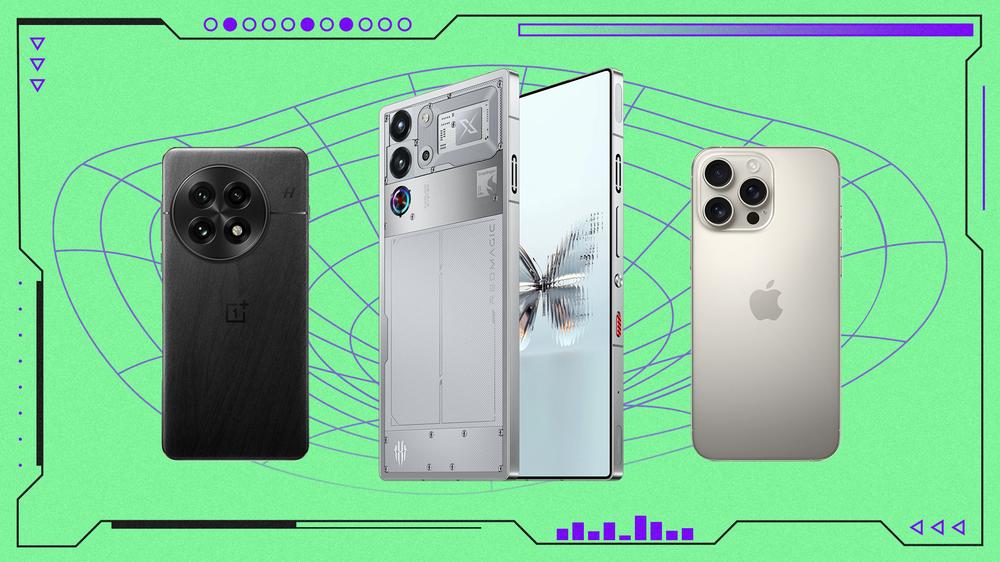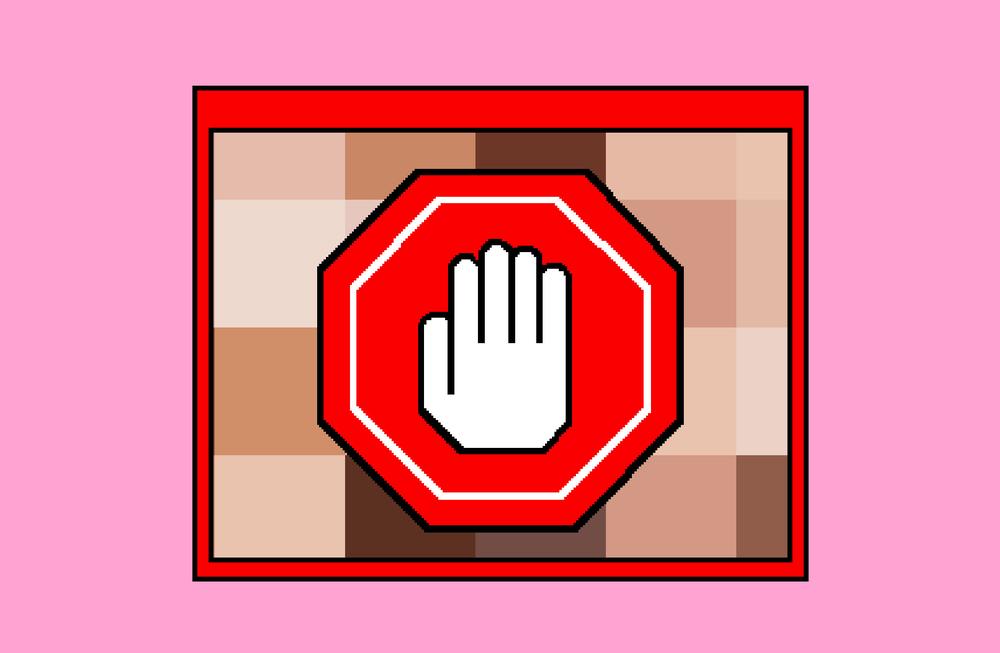While just about every phone you can get your hands on nowadays will be able to play some games, several key features distinguish a fine gaming phone from a great one. Powerful processing is one piece of the puzzle. Being able to sustain high performance levels is also a must – you don’t want to deal with a phone that can only run smoothly for a few minutes before it slows down and scorches your hands. Extra memory and storage are also clutch for gaming phones, providing a means for multitasking even while you have a game running and giving you plenty of space for games. Some gaming phones, like the RedMagic 10 Pro, even offer extra upgrades for gaming, like additional shoulder buttons and enhanced touch sampling rates. (Though you could also just pick up a dedicated phone controller.)
Of course, the display is also a big piece of the puzzle. If you can’t see your games, you’re going to have a hard time playing them. A bigger, brighter display helps, as does a boost in refresh rate for smooth motion. An added benefit of a bigger phone is that your thumbs won’t cover as much of the display when you’re using touch controls. I've been testing and reviewing gaming phones for years now, so with all these details in mind, here’s a look at the best smartphones that also excel when it comes to gaming anywhere, anytime.
Best Gaming Phone
Best Everyday Phone for Gaming
Best iPhone for Gaming
Best Budget iPhone for Gaming
Best Foldable Gaming Phone
Best Budget Android for Gaming
The RedMagic 10 Pro is truly an excellent gaming phone. But with all the performance it pumps out of the Snapdragon 8 Elite chip inside, it got me wondering just what the kind of performance could do if it were funneled into the same kind of games we all play on PC. When I’m not testing phones, I’m often testing laptops, and I’ve tested the MSI Claw 8 AI+ for Lifehacker. What’s been interesting to see is how the divide between the PC and phone hardware has been narrowing, both because the phone chips are speeding up considerably and because Windows has made a push toward ARM (the same architecture used by phone processors) alongside the introduction of Qualcomm’s Snapdragon X Elite SoCs for Windows systems.
With that narrowing divide, I’m constantly checking to see where there’s the closest overlap. For instance, the RedMagic 10 Pro actually performed quite close to the MSI Claw 8 AI+ in Geekbench 6’s single-core and multi-core test. It falls a bit further behind in raw GPU performance, though with just 78% of the performance in Steel Nomad Light. But bear in mind that the MSI Claw 8 AI+ is a powerful handheld that outstrips the Steam Deck considerably in 3DMark, by even more than it beats the RedMagic 10 Pro in Steel Nomad Light (one of the more demanding tests). All that is to say, the RedMagic 10 Pro could make a viable handheld when paired with a phone controller.
Now, there are certainly plenty of great games for Android, but there’s a whole world of PC games that it would be wonderful to throw all of the RedMagic 10 Pro’s horsepower at. But you can’t. And that’s where the upcoming RedMagic 10S Pro gets exciting. As reported by TechSpot, the RedMagic 10S Pro may support some form of Windows emulation to run PC games. While I’d expect there to be some performance penalty as a result, I don’t think even a 25% penalty would be enough to stop the phone from offering excellent performance in games like Hades or Dead Cells — the kind of indie titles that excel on gaming handhelds. And since the new RedMagic 10S Pro is packing a Snapdragon 8 Elite Leading Version chip, it should offer a slight bump in performance over its predecessor.
While this currently remains in the realm of conjecture, as I don’t have my hands on the new phone (yet) and can’t be certain it will even offer the sort of emulation suggested, it’s still an exciting prospect. Even better would be if someone (like Valve) would adapt Steam OS to support some of this mobile hardware. Heck, it might not be long before Windows can run natively on these phone SoCs.
Once you're certain you're a prime candidate for a gaming phone, here's exactly what to consider when you're on the hunt for one. While the best smartphones on the market tend to have some of what it takes to be a decent gaming phone, proper gaming phones tend to have some considerable advantages. You’ll find unseen benefits under the hood, upgrades to the screen and battery, and even extra controls to help give you the edge while gaming.
- Processors: This is a key area for gaming phones as they effectively define how well a phone can run a game. Top-tier chips like those from the Snapdragon 8 family (e.g., Elite, Gen 1/2/3) tend to be strong performers in games, and the recent Snapdragon 8 Elite has shown itself an absolute beast when it comes to gaming. Apple’s iPhones also tend to have pretty high-performance chips, with any model within the last year or two often providing more than enough speed for the latest games.
- Cooling and heat management: While a fast processor is a good start, running games is demanding and generates heat. Gaming phones generally make a point of managing that. Paying attention to sustained performance is a key part of how we test phones’ gaming potential. The Samsung Galaxy S25 Ultra may have great performance in a short benchmark, but it slows down considerably as it heats up. Meanwhile, a top-notch gaming phone like the RedMagic 10 can lag behind Samsung in some benchmarks, but proves itself capable of sustaining its performance for the long haul thanks to powerful heat management in the form of an active cooling phone — something most everyday phones won’t have.
- Power: Sometimes it’s not about hardware when it comes to smartly managing heat. You should be on the lookout for pass-through power when shopping for a gaming phone. This feature lets you plug in your phone and have the chipset draw power directly from the outlet, skipping the battery and avoiding the extra heat this would create while also letting you game nonstop without worrying about running out of charge. But again, this isn’t something you can count on every phone offering.
- Display: Most gaming phones will give you a solid display for gaming. This will include a high resolution and refresh rates ranging from 120Hz to 165Hz or above. Most often, these will be OLED displays, giving you rich contrast and limited motion blur. While many games have framerate caps at 60fps, not all do, and the extra frames can make a world of difference in the perceived smoothness of a game. Quite a few gaming phones also offer high touch sampling rates, ensuring your inputs are registered quickly, and with games often calling for split-second reaction times, this can make a difference.
- Gaming-specific features: Finally, good gaming phones often find ways to make themselves extra useful in games. This often comes in the form of extra software that’s not always pleasing or easy to use, or extra buttons on the phone that let you use more than just your thumbs as inputs. Even with just a pair of shoulder buttons on a gaming phone, you end up with double the input methods you’d have otherwise, and the ability to move, aim, jump and fire all with separate fingers in online FPS games, for instance, makes a big difference.
Deciding on a portable gaming device truly depends on your lifestyle, the type of games you want to play, and how you want to play them.
A gaming phone is ultra-portable and easily pocketed. However, it’s still a highly capable machine that does more than game, offering all your typical smartphone features, including quality cameras, navigation, and communication. Gaming phones also better support cloud streaming for Steam, PlayStation, and Xbox games. Many gaming phones even have cooling solutions to prevent thermal throttling and some handy triggers. If you’re not a fan of touch controls, you can always grab a phone controller and get an experience much closer to a gaming handheld.
Gaming handhelds, like the Steam Deck or Nintendo Switch, are substantially bulkier but still easy to toss in a bag and take on the go. Unlike gaming phones, they are pretty much used solely for gaming, so you get responsive joysticks, triggers, and buttons with these options.
As for actual games, there’s a considerable rift. Android and iOS get plenty of games, and it’s becoming increasingly common to find the same titles on mobile and PC, though the mobile versions are often scaled back in some ways. Gaming handhelds get access to pretty much all of the PC games out there because they are, in fact, gaming PCs (except the Nintendo Switch, of course). Some PC games won’t run well (or run at all) on the low-powered hardware of the gaming handheld, though.
Both gaming handhelds and gaming phones can tap into cloud gaming platforms like Nvidia GeForce Now and Xbox Game Pass. In these, the performance of the phone and handheld don’t matter nearly as much as the quality of their internet connection. In that sense, phones can get an advantage as they offer both Wi-Fi and cellular connectivity (though a very good 5G connection is all but essential to try game streaming).
Battery life can be a tossup. Gaming phones tend to have sizable batteries, run efficiently, and can easily last through the day even with a bit of gaming sprinkled in – otherwise, what use is it as a phone? Gaming handhelds tend to last just a few hours, with the Steam Deck offering pretty poor battery life as an example. And topping up the battery on the go will be easier for the phone, which won’t require a high-wattage charger.
Cost is a big question. The Steam Deck starts at $400 and the original Nintendo Switch is even less than that. Most gaming phones cost more. But some gaming handhelds are landing with prices closer to $1,000, and that far outpaces some of our favorite gaming phones. Plus, most of us need a phone whether we get a gaming handheld or not. The fact a gaming phone can pull double duty should weigh into its value.
The limited access to games may be the deciding factor, as even with cloud gaming as an option, some games simply won’t be available for gaming phones. If everything you want to play is available on mobile or cloud gaming, then it’s worth testing the waters of cloud gaming with your current phone and then, if you like the experience, considering a gaming phone as your next device. If you can’t play the games you want the way you want, then a handheld may fit the bill.

 Stripe apologizes for customer service agents claiming LGBTQ products were banned
Stripe apologizes for customer service agents claiming LGBTQ products were banned